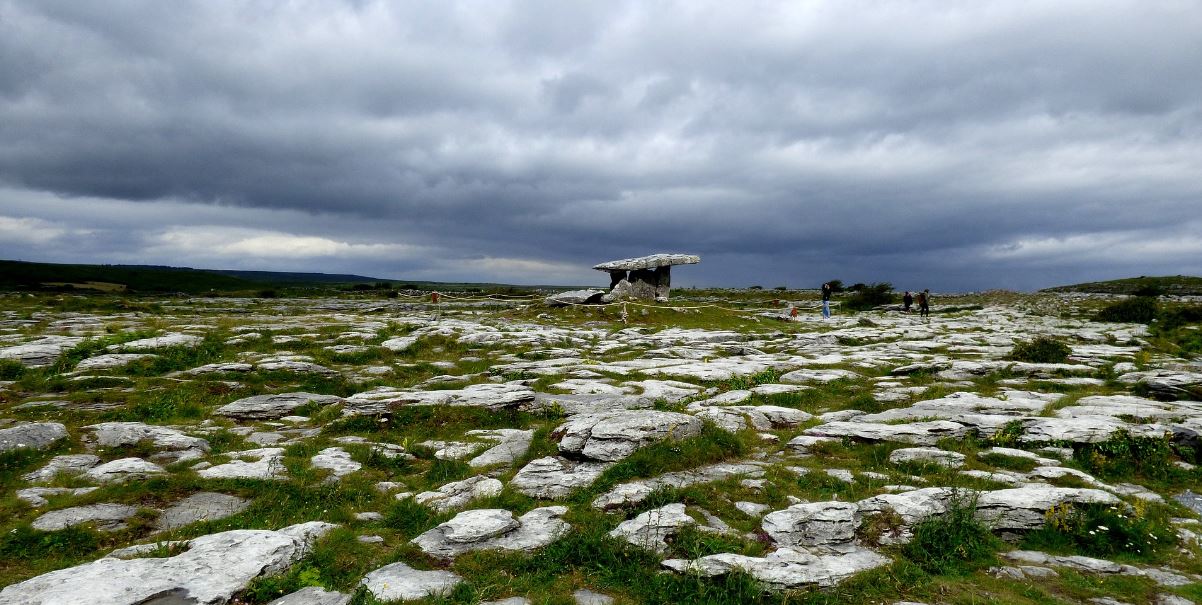ANCIENT DNA REVEALS INBREEDING AMONG DYNASTIC ELITE OF NEOLITHIC IRELAND 
22 June 2020
An interdisciplinary team of researchers, including academics from Queen’s University Belfast, have shed new light on the earliest periods of Ireland’s human history.
The team found an ancient genome of an adult male buried in the heart of the Newgrange passage tomb in the Boyne Valley, County Meath, points to first-degree incest in early Ireland.
Led by Trinity College Dublin, the research was carried out in collaboration with colleagues from Queen’s, University College London, NUI Galway, University College Cork, University of Cambridge, Sligo Institute of Technology and the National Monuments Service, with support from the National Museum of Ireland and National Museums Northern Ireland.
The survey of ancient Irish genomes, (published on 18 June) in Nature, suggests the man who had been buried in the Newgrange chamber belonged to a dynastic elite, implying he was among a ruling social class akin to the similarly inbred Inca god-kings and Egyptian pharaohs.
Aged over 5,200 years old, and older than the pyramids, the Newgrange passage tomb in Ireland is renowned for its annual solar alignment, though little is known about who was interred in the heart of the monument, or of the Neolithic society which built it.
The team also unearthed distant familial relations between this man and other individuals from sites of the passage tomb tradition across the country, namely the cemeteries of Carrowmore and Carrowkeel in County Sligo, and the Millin Bay monument in County Down.
The Millin Bay megalithic site has always been considered somewhat atypical because its shape does not conform to that of the main megalithic monument classes. It has previously been considered, however, to have passage tomb affinities because of its association with megalithic art and Carrowkeel pottery typical of these burial grounds. This study has confirmed these connections through ancient DNA.
“It is quite incredible to think that the man born of an incestuous union and interred inside the Newgrange passage tomb was biologically related to those buried in tombs in the megalithic cemeteries in Sligo and the Millin Bay monument in County Down.
“These burial clusters lie several hundred miles apart from one another and are suggestive of widespread and enduring connections,” said Professor Eileen Murphy, from the School of Natural and Built Environment at Queen’s.
Matings of this type (e.g. brother-sister unions) are a near universal taboo for entwined cultural and biological reasons. The only confirmed social acceptances of first-degree incest are found among the elites – typically within a deified royal family.
By breaking the rules the elite separates itself from the general population, intensifying hierarchy and legitimising power.
“I’d never seen anything like it,” said Dr Lara Cassidy, from Trinity College Dublin and first author of the paper. “We all inherit two copies of the genome, one from our mother and one from our father; well, this individual’s copies were extremely similar, a tell-tale sign of close inbreeding.
“In fact, our analyses allowed us to confirm that his parents were first-degree relatives.
“It seems what we have here is a powerful extended kin-group, who had access to elite burial sites in many regions of the island for at least half a millennium,” Dr Cassidy continued.
“Here the auspicious location of the male skeletal remains is matched by the unprecedented nature of his ancient genome,” said Professor Dan Bradley, from Trinity College.
“The prestige of the burial makes this very likely a socially sanctioned union and speaks of a hierarchy so extreme that the only partners worthy of the elite were family members,” he added.
The genome survey stretched over two millennia and unearthed other unexpected results. Within the oldest known burial structure on the island, Poulnabrone portal tomb, the earliest diagnosed case of Down’s syndrome was discovered in a male infant and isotopic analyses showed a dietary signature of breastfeeding.
Additionally, the study found that the monument builders were early farmers who migrated to Ireland and replaced the hunter-gatherers who preceded them. However, this replacement was not absolute; a single western Irish individual was found to have an Irish hunter-gatherer in his recent family tree, pointing toward a swamping of the earlier population rather than extermination.
Genomes from the rare remains of Irish hunter-gatherers themselves showed they were most closely related to the hunter-gatherer populations from Britain (e.g. Cheddar Man) and northwest mainland Europe. However, unlike British samples, these earliest Irelanders had the genetic imprint of prolonged island isolation.
This fits with what is known about prehistoric sea levels after the Ice Age; Britain maintained a land bridge to the continent long after the retreat of the glaciers, while Ireland was separated by sea and its small early populations would likely have arrived in primitive boats.
The work was funded by a Science Foundation Ireland, Health Research Board, Wellcome Trust Biomedical Research Partnership Investigator Award to Professor Dan Bradley and an earlier Irish Research Council Government of Ireland Scholarship to Dr Lara Cassidy from Trinity College Dublin.
The full paper can be viewed here.
Media enquiries to Sarah Beveridge at Queen's University Communications Office
Back to Main News
Top of Page